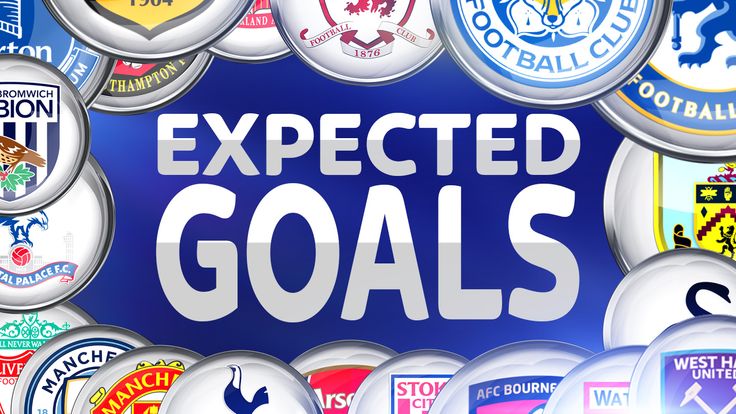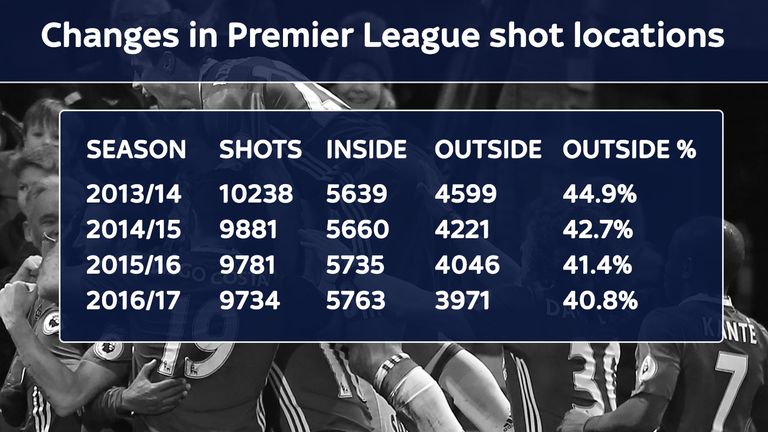Expected goals explained: The analysis that is changing the game

Friday 9 June 2017 06:23, UK
Football clubs calculate 'expected goals' to help analyse their performances, but what exactly does this mean? With the help of analytics expert Rory Campbell, Adam Bate looks at the detail and why it is changing the game.
It was two years ago now that Arsenal manager Arsene Wenger became the first high-profile Premier League boss to publicly use the term 'expected goals'. "We analyse after the game the number of chances and the number of expected goals we should score with the chances we create," he said in October 2015. But even then, the expected-goals concept was not new.
Analysts recognised long ago that in a low-scoring game such as football, mere goals do not provide enough information to provide a clear picture of performance. While the average fan is accustomed to looking at shots, possession or even corners to get an idea of how their team played, the professionals delve deeper into the data for more accurate numbers.
Hence the expected-goals model is used, as Rory Campbell, an analytics expert who has worked with Premier League clubs and is a director of the company C&N Sporting Risk, explains. "Expected goals is a statistical measure of the quality of chances created and conceded," Campbell tells Sky Sports. "It is therefore a way of looking at the underlying repeatable quality of teams and players that uses a look at statistics beyond goals."
Although statistics can be off-putting for some, the logic behind it is easy to understand:
- A shot from 8 yards has a higher xG value than a shot from 18 yards
- A shot directly in front of goal has a higher xG value than a shot from a tight angle
- A shot taken by the foot has a higher xG value than a header
By factoring in the distance from which a shot was taken, the angle of that shot, the type of shot, the type of pass that led to the shot and the phase of play from which the shot arose, analysts are able to build a better picture of how likely that shot is to be scored. When each shot in a game is ascribed an expected-goals (xG) value, useful information emerges.
"A lot of watching football and coaching football is trying to work out how to create more or better chances and concede less or worse chances," says Campbell. "Often when you hear coaches and players saying they got unlucky it is basically saying we created more or better chances than the other team and ended up losing.
"Expected goals tries to quantify the expected value of all chances to provide a descriptive look back at individual games or seasonal performance. But it is also looking to provide a predictive insight into future performance. How likely it is that teams are going to be able to repeat their current performance? Is the team overperforming or underperforming?"
This is valuable information for clubs. It can help to establish whether a dip in form is little more than a blip and that the team can expect to regress back to the mean shortly. Such knowledge might keep a manager in a job. Alternatively, it can provide an advanced clue that further strengthening is required even when everything appears to be going well.
Expected-goals models are not without their critics. Firstly, the models vary with different analysts interpreting the data in different ways. Moreover, a model based only on shot data might not properly account for chances that did not actually result in a shot - think of that low ball fired across the box that required only a tap in at the back post.
Problems
Expected goals also struggles to account for where the defenders are on the pitch - something that can dramatically impact the relative chances of two shots taken from precisely the same spot. And what about the taker? Harry Kane's finishing ability has seen him outperform the expected goals for his chances in each of the past three seasons.
But there is evidence that clubs are taking notice and not just in terms of the number of analysts now employed within the game. In fact, it is possible that expected-goals models are influencing the way that the game is played. For example, the number of shots that teams are taking in the Premier League is falling. But this is only part of the story.
"The total shot numbers are going down but this is almost all down to shots taken outside of the box declining," says Campbell. In fact, shots from inside the box have actually increased for three seasons in a row. "It is fairly intuitive that a shot closer to the goal has a higher xG value, the closer we are shooting to the goal, the higher likelihood of us scoring more goals."
This is just one example of how analysis can help to encourage better decision-making on the pitch. Expected-goals models will be refined in the coming years and improved upon. But what is clear is that clubs are not going to stop wanting to know how to create or prevent better quality chances and how to measure them accurately.
Expected goals are here to stay.





